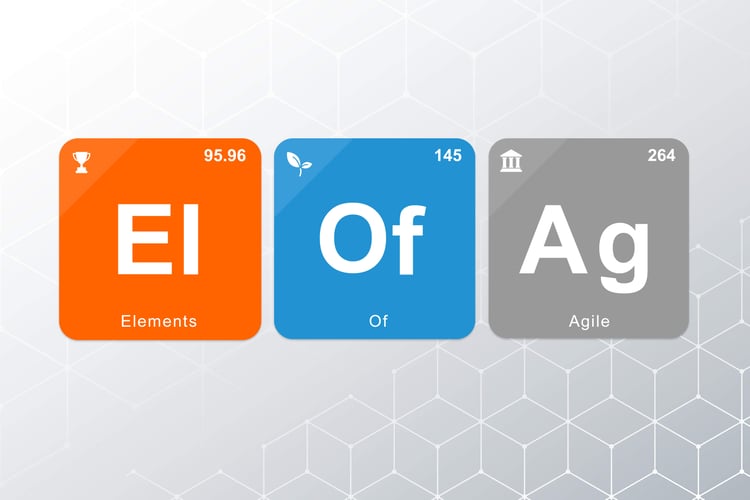“We’re trying to swallow the ocean here!” is a common phrase for many teams I’ve been on. With teams that love improvement and growth, we try to improve in all areas without understanding what’s most significant for value-driven change. After seeing this issue play out but not having a clear picture of where to start adjusting this mindset, I ended up going to the Agile2023 conference, where Mike Cohn introduced Mountain Goat’s new assessment tool called Elements of Agile. His seminar left a lasting impression on how I viewed effective agile transformations and provided a concrete way to visualize, assess, and improve different facets of agility. In his seminar, he described several use cases and examples to illustrate the utility of Element of Agile.
In this blog series, I’ll be sharing my journey with the Elements of Agile assessment and talking about the experience as my team and I take the assessment, review it, implement suggested strategies and improvements, and monitor the results. The goal will be to see if this tool will enable my current team to prioritize and implement needed and essential improvements. To start, I’ll quickly run over a summary of the Elements of Agile and my team’s use case so you can see if it’s also valuable for your team and situation!
The main goal of using the Elements of Agile is to guide your teams or organization to higher maturity levels. It starts by taking an assessment and receiving a visualized element table based on your answers that looks like this –
This resulting table provides an overview of your team’s current strengths, weaknesses, and areas of improvement. Typically, you will need to improve on the Foundational elements before progressing to the higher levels.
Taking the Elements of Agile assessment didn’t take very long, and if you have a good idea of where the team is, you could fill it out alone or include several team members to acquire their feedback as well. While it took me about 25 to 30 minutes to complete, considering the thought-provoking questions as I was answering them was a great way to reflect on the way we were working. I was able to come away with some takeaways to work on separately. Once finished, I received a similar element table to the example above and began to review the results and prioritize the needed improvements.
In the next blog post, I’ll talk more about the results and my experience reviewing the assessment. In the meantime, I’d love to hear how you’ve used or tried various agile assessments to see how they compare with the Elements of Agile. If you’d like to read more about the assessment, visit Mike Cohn’s blog for more info.
Image credit here.
More from the blog
View All Blog PostsSubscribe to Our Blog
Fill out your email address to receive notifications about new blog posts from CC Pace!

